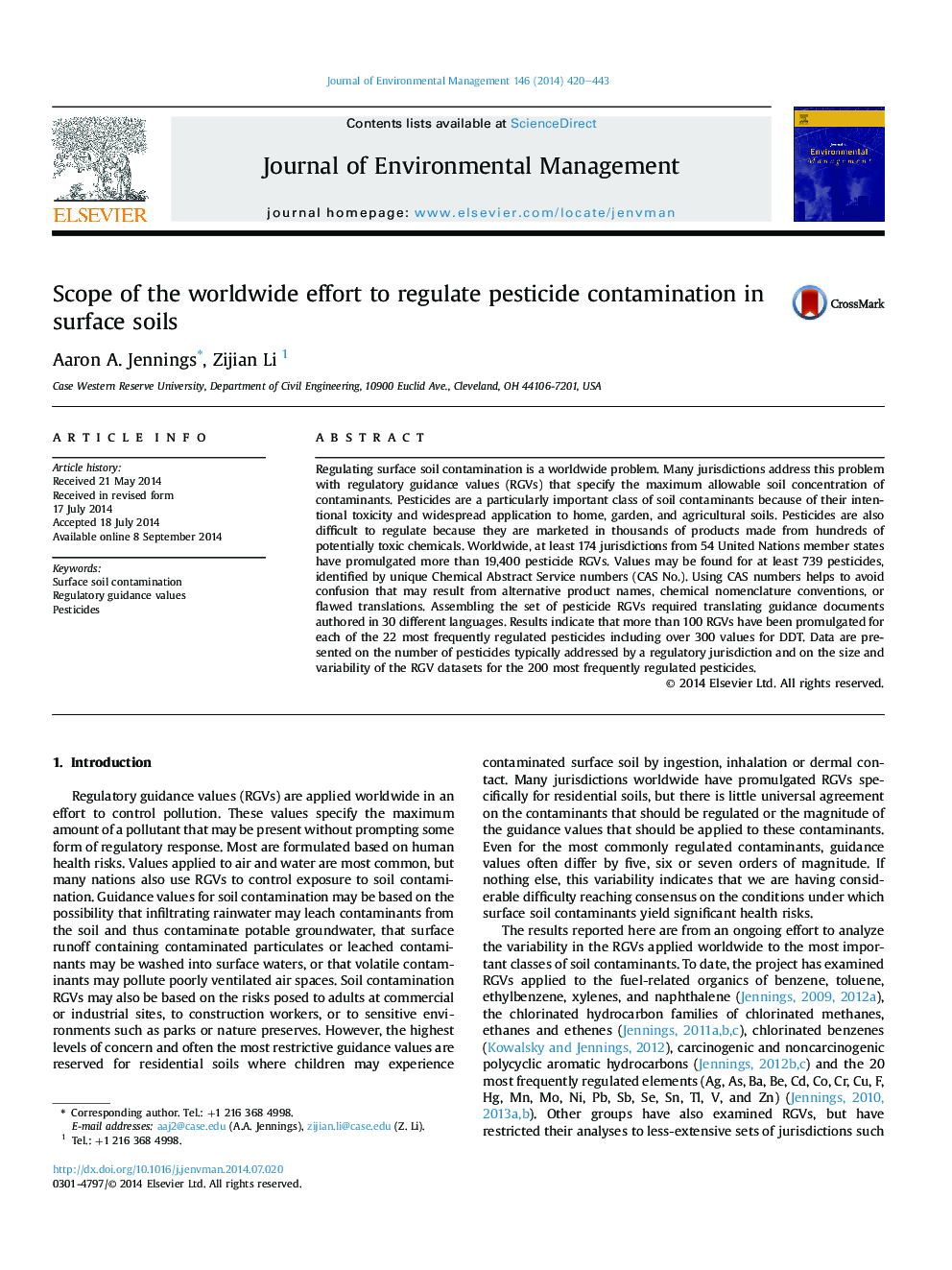| Article ID | Journal | Published Year | Pages | File Type |
|---|---|---|---|---|
| 7483658 | Journal of Environmental Management | 2014 | 24 Pages |
Abstract
Regulating surface soil contamination is a worldwide problem. Many jurisdictions address this problem with regulatory guidance values (RGVs) that specify the maximum allowable soil concentration of contaminants. Pesticides are a particularly important class of soil contaminants because of their intentional toxicity and widespread application to home, garden, and agricultural soils. Pesticides are also difficult to regulate because they are marketed in thousands of products made from hundreds of potentially toxic chemicals. Worldwide, at least 174 jurisdictions from 54 United Nations member states have promulgated more than 19,400 pesticide RGVs. Values may be found for at least 739 pesticides, identified by unique Chemical Service numbers (CAS No.). Using CAS numbers helps to avoid confusion that may result from alternative product names, chemical nomenclature conventions, or flawed translations. Assembling the set of pesticide RGVs required translating guidance documents authored in 30 different languages. Results indicate that more than 100 RGVs have been promulgated for each of the 22 most frequently regulated pesticides including over 300 values for DDT. Data are presented on the number of pesticides typically addressed by a regulatory jurisdiction and on the size and variability of the RGV datasets for the 200 most frequently regulated pesticides.
Related Topics
Physical Sciences and Engineering
Energy
Renewable Energy, Sustainability and the Environment
Authors
Aaron A. Jennings, Zijian Li,
